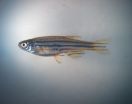In a survey posed to port authorities around the world, the Stanford team found that most officials are unsure how best to protect their facilities from rising sea levels and more frequent Katrina-magnitude storms, which scientists say could be a consequence of global warming. Results from the survey are published in the journal Climatic Change.
"Part of the problem is that science says that by 2100, we'll experience anywhere from 1.5 to 6 feet of sea level rise," said the study's lead author, Austin Becker, a graduate student at Stanford. "That's a huge range."
Port authorities, like many government agencies and private companies, have to make tough financial decisions when it comes to funding infrastructure, he said. They need accurate information from scientists about what to expect, so that they can plan accordingly. Building a structure to withstand a 6-foot sea level rise would cost much more than trying to accommodate a 1.5-foot rise, said Becker, a doctoral candidate in the Emmett Interdisciplinary Program in Environment and Resources at Stanford.
In 2009, Becker distributed 160 surveys to members of the International Association of Ports and Harbors and the American Association of Port Authorities – the first worldwide survey of port authorities to address climate change adaptation. A total of 93 agencies representing major seaports on every continent, except Antarctica, responded. The majority of respondents ranked sea level rise and increased storm events associated with climate change high on their list of concerns. However, only 6 percent said that they intend to build hurricane barriers within the next 10 years, and fewer than 18 percent had plans to build dikes or other storm protection structures.
"As we saw with Katrina in 2005, storm and flood damage can devastate a regional economy for years after an event and have national impacts," said Becker. Katrina, a Category 5 hurricane, caused an estimated $1.7 billion of damage to Louisiana ports. This month, the region is bracing for flood damage once again, as the National Weather Service is predicting that the Mississippi River could crest in New Orleans on May 23.
And with scientists forecasting a doubling of Category 4 and 5 hurricanes in the Atlantic Ocean by 2100, it seems all the more imperative to start thinking about adapting port infrastructures now, he said.
Threat of violent storms
Sea level rise and more frequent violent storms resulting from climate change threaten to take a tremendous toll on all types of infrastructure – especially along the coasts, said study co-author Martin Fischer, professor of civil and environmental engineering and director of the Center for Integrated Facility Engineering at Stanford.
Fischer, Becker and a group of Stanford engineers are developing computer models to help port authorities and other government agencies make more informed decisions about adapting to climate change as they plan for the next generation of infrastructure. The group meets weekly at a seminar that focuses on engineering and policy for a sustainable future. "Look around at any seaport today and you will see structures that were built 100 years ago," said Fischer. "And the buildings that we are building today will be around when sea level rise begins to reshape the coast."
The problem on a global scale, he said, is that ports may start scrambling all at once to adapt their structures to changing environmental conditions. "It could potentially exceed our capacity for construction worldwide," he added.
Fischer and his colleagues have developed a model that demonstrates how a rapid, simultaneous push to fortify the world's seaports could drive up demand for construction materials and equipment. The model, called Sebastian, uses a Google Earth platform to simulate the costs and time required for building dikes around 200 of the world's most active seaports. Sebastian knows the shape of the ocean floor at each location and tailors the structure to each site to produce an estimate of the materials, labor and equipment that would be needed to fortify the port against sea level rise.
"Sebastian allows us to run different scenarios based on different levels of sea rise, and see how the ports are affected," said Fischer. Using criteria in the Army Corps of Engineers manual, the model calculates the resources needed for each variation of the structure. It's a way to calculate big-picture, worldwide demand, Fischer said, but it also gives managers more reliable information about how much survivability they are buying when they invest in different types of protective structures.
Lack of oversight
Another difficult challenge in preparing for climate change at seaports is that no single agency or individual has sole authority over any given port, according to Becker. Some ports are privately owned, some are public and some are a mixture of both. And a broad range of entities – from transportation companies to insurance companies to the Environmental Protection Agency – have some stake in how they are managed. The arrangement greatly complicates ports' efforts to budget and plan for the future, according to the study.
But plan they must, said Fischer.
"By the end of the century, quite a few ports will be in trouble, even if you are using the most conservative estimates for sea level rise," he said. "And if you use the estimates at the top of the range, all of them will be in trouble."
INFORMATION:
Other co-authors of the study are Satoshi Inoue of the National Graduate Institute for Policy Studies in Tokyo and Ben Schwegler, a consulting professor of civil and environmental engineering at Stanford and chief scientist at Walt Disney Imagineering.
The research was funded by a planning grant from the Sustainable Built Environment Initiative at the Woods Institute for the Environment at Stanford. Additional funding was provided by a McGee grant from the Stanford School of Earth Sciences.
This article is by Donna Hesterman, a science-writer intern at the Woods Institute for the Environment at Stanford.
END

